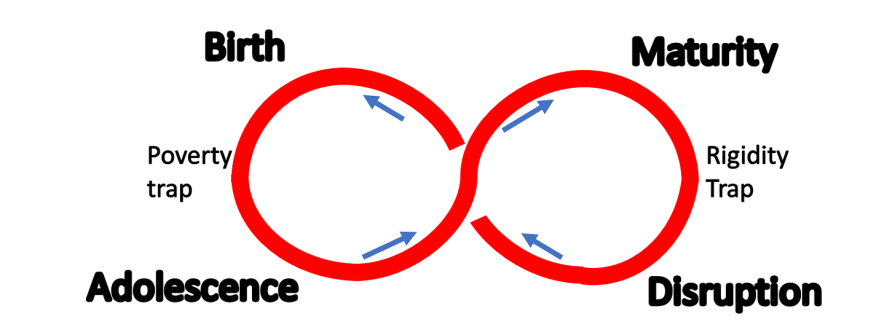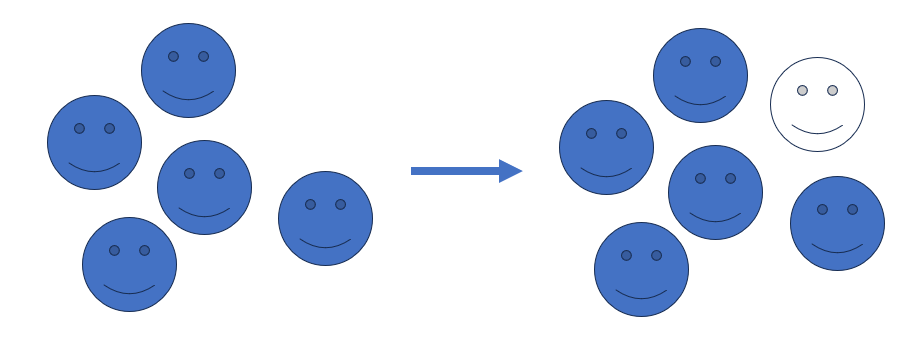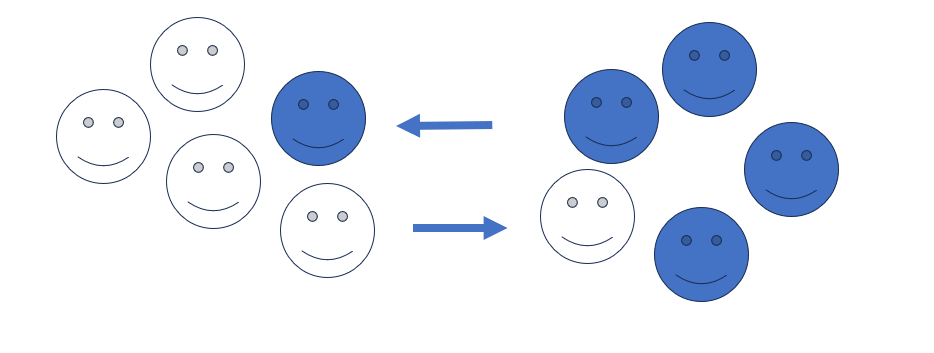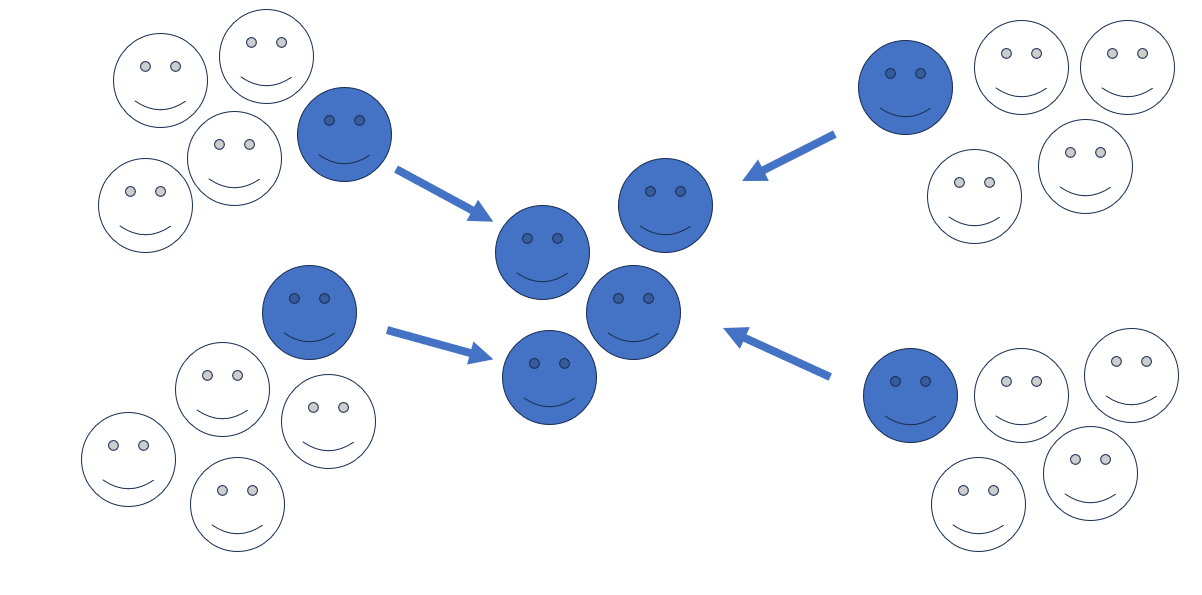Stable teams are overrated — changes are inevitable. Few teams remain the same for more than a year, so it doesn’t make sense to hold on to the idea that stable teams are the ultimate goal. This is one of the insights Heidi Helfand has gained and decided to talk about in her book Dynamic Reteaming.

Heidi Helfand coaches organizations and teams to create great products. Over the years, she recognized the inevitability of change and found five reteaming patterns. This resulted in her writing the book and gave leaders the tools to effectively handle team changes. She has been inspirational for other change agents, like Jurgen Appelo, who created the unFIX model.
Today, we are going to discuss the key elements of dynamic reteaming as an introduction. I do this to enlighten you on the opportunities that arise with team changes.
“Team change is inevitable. Get good at it.” — Heidi Helfand
We just established that team dynamics change. This is the premise of Heidi Helfand’s Dynamic Reteaming. According to Helfand, Tuckman’s stages of group development (forming, storming, norming, performing, and adjourning) don’t reflect reality. She advocates the eco-cycle, where teams follow repeating cycles of birth, adolescence, maturity, and disruption:

This ecocycle applies to different levels: individuals, teams, and companies. The patterns that emerge from this ecocycle apply to all these levels. Every time a person joins or leaves the team, the team starts a new cycle.
The patterns of reteaming are the core of Helfand’s concept. These are:
These patterns have distinct traits that all require a different response.
The patterns of dynamic reteaming reflect different types of impact on the teams. For each pattern, dynamic reteaming identifies best practices to ensure team effectiveness. I will now give a summary of these.

When someone joins or leaves the team, this impacts the entire team. You therefore wish to have tactics to address all of this.
A team can welcome a new member by:
The people who are already there can fear a sense of loss or disorientation. After all, the team dynamics they are used to will change. It helps to facilitate re-belonging for these people and to take time to bring people along on the ride.
When people leave, the impact on the team can be guided by:

When you split the team, changes to the team structure happen. This is why Helfand advises practices like:

Merging is combining two or more teams into one. The result is a new larger team. Merging has some specific tactics too.
Helfand points out that big teams can be valuable. Small teams aren’t the answer to every question. Shifting needs and priorities can call for the need to have greater flexibility. By merging teams you can achieve this, having a greater variety of skills and talents.
It is often practical to let the team decide if they need to (temporarily) merge with another team. This empowers them to find the best ways to be effective and fosters creativity to find solutions to problems.
When teams merge, there’s often a neutral zone where people struggle to find a new beginning. Mentors can make this time of unease as short as possible. This requires fostering an environment of safety.
During the process of a merger, communication is key. You need to communicate to the point you are almost overdoing it. Patrick Lencioni, a leadership guru, says, “Say it seven times!”
People need time to adjust and find footing in a radically new environment. It is important to have patience.

Switching involves people swapping teams. There are a few tactics you can use for this situation.
Firstly, when people have the opportunity to develop themselves, they will be more likely to stay and have higher motivation. Therefore, this should be a deliberate tactic. The switching pattern brings the benefit of developing your people.
Switching not only helps individuals; it also helps spread knowledge. This leads to higher resiliency as the team will reduce the risks of siloed knowledge. The switching tactic helps to avoid team stagnation. Using the switching pattern at a cadence helps to make it part of the company culture.
You can go so far as to have switching pairs. For example, you can have individuals with comparable skills and a mutual wish to experience working in multiple teams. They could agree to switch teams every couple of weeks or months.
One way to foster switching is to expose all the opportunities within the organization. This allows people to make an informed decision before they switch. This only works when managers don’t hold people back.
The benefits of switching are, among others, that people gain more knowledge and that they can make themselves useful in a wide area of the organization. It is an anti-pattern to have persons that have a monopoly on knowledge. This doesn’t only limit switching opportunities. It also is not helping this individual in the long run, when the specific knowledge is no longer required.

Isolation is a blend of several different patterns. It has elements of grow and split, merging, and one by one. Individuals from former teams join a new team. They will need to find their purpose and team agreements. The teams that see one member leave deal with this change too. They will experience the impact as with the one by one pattern.
This article has touched the surface of the topic of dynamic reteaming. I aimed to show you why stable teams aren’t always the best and how the dynamic reteaming pattern can help you find tactics to accommodate change.
There’s more to discuss that goes beyond the purpose of this article. If you wish to take a deep dive into the topic, I recommend reading the Dynamic Reteaming book.
Featured image source: IconScout

LogRocket identifies friction points in the user experience so you can make informed decisions about product and design changes that must happen to hit your goals.
With LogRocket, you can understand the scope of the issues affecting your product and prioritize the changes that need to be made. LogRocket simplifies workflows by allowing Engineering, Product, UX, and Design teams to work from the same data as you, eliminating any confusion about what needs to be done.
Get your teams on the same page — try LogRocket today.

Stop letting unreliable data block features. Treat data as inventory to track quality, ownership, and ship with confidence.

Learn why slide decks slow teams down and explore better tools like whiteboards, PRDs, and prototypes to improve collaboration and alignment.

AI PM roles are evolving fast. Learn the five types of AI PMs, the skills they need, and how they shape AI products across industries.

Learn how you can use AI agents to automate workflows, boost productivity, and choose the right tools while avoiding common pitfalls.